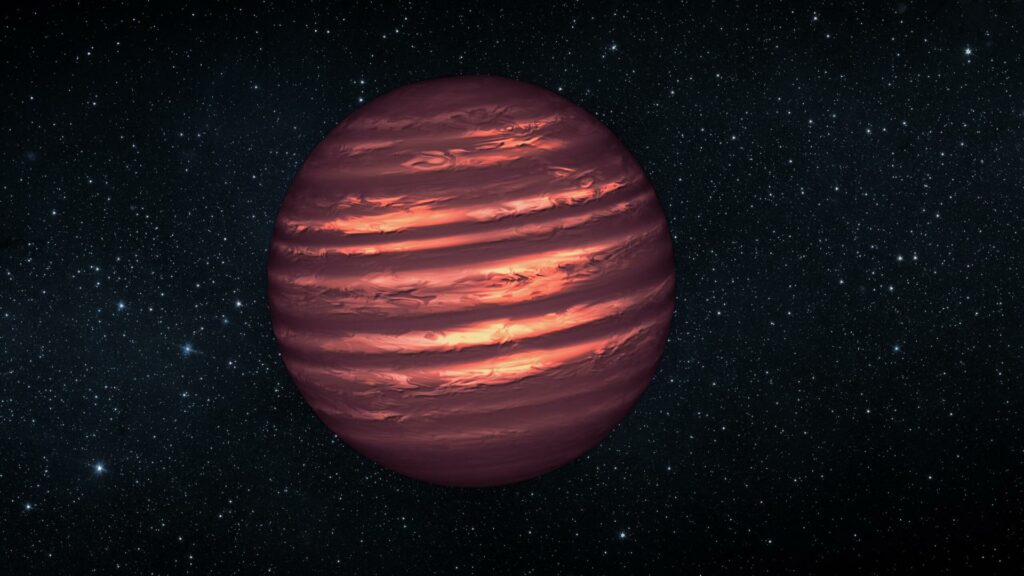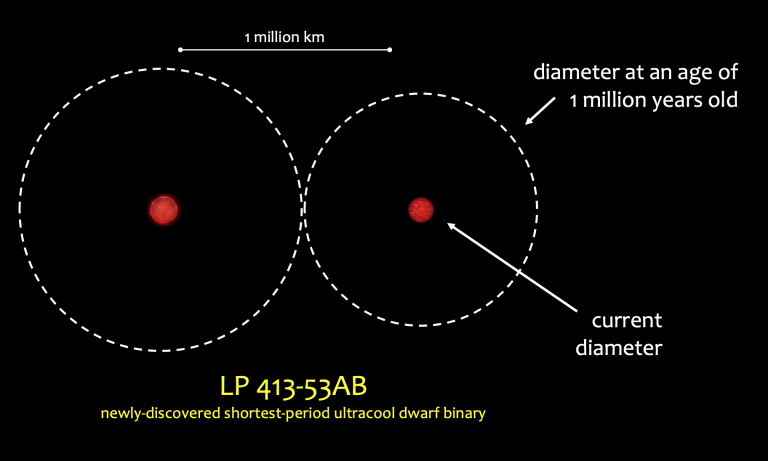A team of American astrophysicists has announced the discovery of a record-breaking pair of ultra-cold brown dwarfs. The distance between them is only three times greater than the distance between the Earth and the Moon.
What are brown dwarfs
Brown dwarfs are objects which have masses ranging from 13 to 80 Jupiter masses. They occupy an intermediate position between giant planets and stars. The mass of such objects is not enough for permanent fusion reactions based on hydrogen atoms to “start” in their depths. Because of this, they are sometimes called “failed stars“.

At the same time, unlike giant planets, some reactions involving deuterium and lithium nuclei can still occur inside brown dwarfs. But, by astronomical standards, they last very short, after which the brown dwarfs gradually cool down.
Record pair of brown dwarfs
The newly found pair of brown dwarfs was designated LP 413-53AB. Initially, astronomers thought it was a single object, since their spectra actually merged. However, a deeper analysis shows that we are talking about a close pair. The distance between brown dwarfs is about 1.2 million km. This is about three times more than the distance between the Earth and the Moon, which is a new record for such systems.

Brown dwarfs make one orbit around each other in 17 hours. Their masses are about 79 and 65 Jupiter masses, surface temperatures — 2350 °C – 2600 °C. The age of the system is several billion years.
According to the researchers, the LP 413-53AB system may have a difficult past. Perhaps there was a third component in it earlier, which was ejected, after which the brown dwarfs gradually got closer. According to another version, initially they were in a wider orbit, and then took the current configuration due to stellar winds and the action of tidal forces.
Earlier we talked about how the TESS telescope discovered a hot brown dwarf.
According to https://arxiv.org
Follow us on Twitter to get the most interesting space news in time
https://twitter.com/ust_magazine
